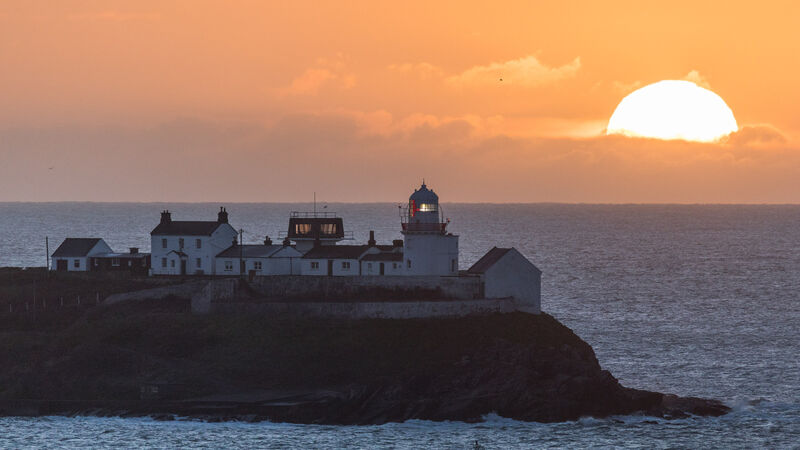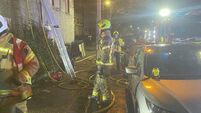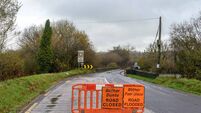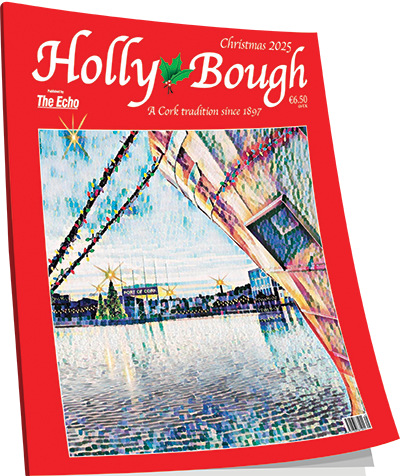January took a heavy toll on ships off Cork during the 19th century

On Monday January 16, 1877 a small boat set out heading towards a barque that was heading for Cork Harbour. Later it was found overturned near Roche’s Point. The five occupants had drowned. Picture David Creedon
ON JANUARY 19, 1851, a small boat and other debris which appeared to be from a sailing ship washed onto Ballycroneen beach in east Cork.
The beach is located between Ballycotton and the entrance to Cork Harbour at Roche’s Point.
There were pieces of what seemed to be furniture, possibly from the cabin of a ship. The name Heroine was inscribed in gilt-edged lettering on what looked to be a headboard from a bed.
Over the next few days, more wreckage washed ashore along that stretch of Cork coastline.
In those days communication was not as fast as now, so it took some time to establish if a vessel named Heroine was missing.
It was established that a ship of that name had sailed from Waterford Port on January 6. Further information was that it had originally sailed from Liverpool and was bound for Africa.
Nothing more was ever heard of the Heroine which, it was then speculated, must have foundered after leaving Waterford. A severe gale had hit the Cork coast around January 15 when it could have been passing the Cork coast.
There is not a lot of information available about that ship, whether it was a trading vessel or an emigrant transport.
In 1851 Liverpool was the leading emigration port in Europe with 159,840 passengers leaving that year, some having crossed from Ireland, but their major destination was to North America. Until the 1860s sailing vessels were the main transport from there for emigrants.
However, Liverpool was also a base for shipping companies bringing raw materials for British industry and also trading overseas.
It is intriguing that there is not a lot of information about this ship available, how many people were aboard or its cargo.
Shipping incidents
The Heroine is one of 12 shipping incidents that happened in the month of January during the 19th century, some minor, others serious.
Seven days before the finding of ship’s debris at Ballycroneen, on January 12, 1851 a ship carrying grain, the Voran, reported to be coming from Odessa, went aground in Ringabella Bay, south/west of the entrance to Cork Harbour. Tugs were unable to free her and she was wrecked in a gale a few days later. The crew had been safely rescued.
Some 26 years later, in one of those unfortunate maritime coincidences, Ringabella was involved in a maritime tragedy in which five men died.
On Monday January 16, 1877 a small boat set out from there heading towards a barque called the Jones which was heading for Cork Harbour.
In those days arriving vessels would be approached by what were known as local ‘trading boats’— or described by ships’ crews as ‘bum boats’ — which offered to sell local goods and produce to the ships arriving into port.
To do so, the small boats would move close to the arriving vessel, secure onto it and then local men would jump from the small boat onto the arrival to trade while their own boat was towed along behind.
There were five men in the small boat when it left Ringabella near Fountainstown.
However, there was some misjudgement in this potentially dangerous operation and it seemed that the speed of the arriving sailing barque was too great for the small boat behind when it connected to the bigger vessel.
It suddenly parted from the barque, possibly because the rope between the two vessels was not strong enough and snapped. Later it was found overturned near Roche’s Point. The five occupants had drowned.
In two days of January 1863 two merchant sailing vessels got into difficulties approaching Cork Harbour.
An Italian-owned ship didn’t make the entrance and went aground, but the crew got off. The vessel became a wreck. The following day, January 20, a ship arriving from Gibraltar also didn’t manage to manoeuvre safely through the harbour entrance and went aground below Fort Camden. It took six days for two harbour tugs to get her off, fortunately undamaged and with no loss of life.
Salmon and trout angling
The Minister for the Environment, Eamon Ryan, has decided that 81 rivers around the country will be available for salmon and sea trout fishing this year.
“42 will be open fully, with a further 39 only to ‘catch and release’ angling. 66 rivers are to be closed as they have no sustainable surplus available. General improvements in stocks from 2023 have been maintained for 2024.”
The Department of the Environment in a statement clarifying what is allowable said: “The 42 Rivers open for harvesting salmon are those with numbers indicating tags that may be issued for fishing – ‘0’ indicating no fishing can take place as no tags will be issued - and these rivers are effectively closed. The conservation limit is the number of adult spawning fish required to maintain a healthy and sustainable stock in each individual river. The key issue to support increased stocks is improvement in water quality. Many of our rivers are not at a sufficiently high-water quality level to support sustainable stocks, often caused by agricultural activities, and to a lesser extent, insufficient treatment of waste water.”
Details of what is allowed in Cork rivers by the Department are shown left.
Podcast thanks
My thanks to readers for their encouragement following the launch of my new podcast at the weekend, with suggestions for content items, all gratefully received.
It is being broadcast on all major podcast services, on the Community Radio Network stations around Ireland and on https://tommacsweeneymaritimepodcast.ie.
Email: tommacsweeneymarine@gmail.com
More in this section







 App?
App?





